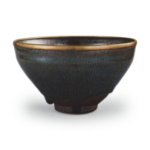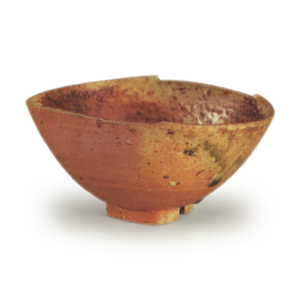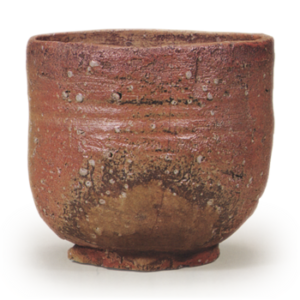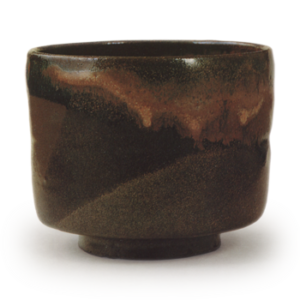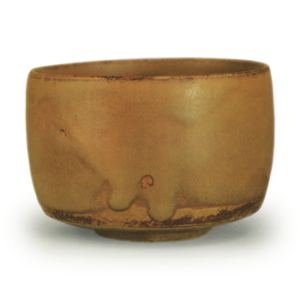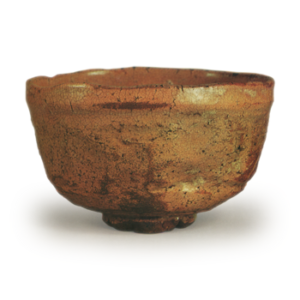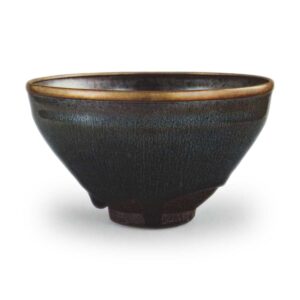
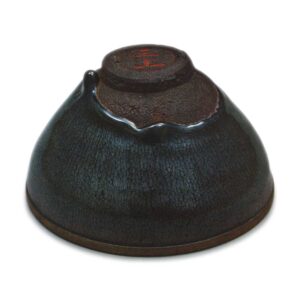
Name: Hoshikenzan
Tokugawa Art Museum
Height: 6.9 – 7.4 cm
Diameter: 12.2 cm
Foot diameter: 4.2 cm
Height: 0.8 cm
Like the previous work, this tea bowl is called “Hoshikenzan” and is from the Bishu Tokugawa family. It is from the same Ken kiln, and the clay, shape and glaze are very similar, but there are subtle differences in the color and sheen.
As usual, the clay is reddish-black and rough. The foot ring is also made in the usual way. As you can see in the illustration, there is a red inscription inside the foot ring that says “Sangami”. According to tradition, it is said to be written by Rikyu, and there is a seal of approval by the old calligrapher Ryoban, but the authenticity is unknown, and the connection between this tea bowl and Rikyu is also unclear. It is probably not a signature or proper noun, but a symbol, such as “San no ue”. I don’t think there is much need to be concerned about this.
The thick glaze is a deep, dark black, but because it has light chocolate-colored oil spot-like flecks floating all over it, it feels like a brownish black. I say “oil spot-like” because the round grains are not arranged neatly, as in the previous work or the next work, the Yudeki Tenmoku. It feels like the various-sized amoeba-like flecks, like those seen on ginkgo tree bark, are intertwined and flowing towards the bottom. These spots are not as dark as the ones in the previous piece, and are uniformly tinted a light brown.
Yudeki are formed when metallic salts such as ferric oxide or manganese in the glaze crystallize and take on a granular shape during the firing process. After these grains float to the surface of the glaze in a round, uniform shape, if the firing conditions are maintained for a while, the yudeki will be fired in good shape without breaking. However, if the firing becomes unstable due to the fire going out partway through, the oil spots will collapse and flow down, resulting in a “rabbit’s fur” pattern. In the case of this tea bowl, it did not reach the “rabbit’s fur” stage, but it was probably fired with the oil spots on the verge of collapsing. Whether it’s yohen, yudeki, or usugama, since the metallic salts in the tenmoku glaze are created by subtle adjustments to the heat, it is not wrong to say that each tea bowl has a different glaze tone. For that reason, it is fun to see the ever-changing scenery.
Even in this teacup, the surface of the glaze has a very beautiful film that emits iridescence. When you compare it, the iridescence seems to be stronger on the inside than on the outside. It may be that the film was better on the inside, but on the other hand, it could also be said that the light reflects off each other on the inside, making the iridescence even stronger. The center of the wide field of vision is flat, and slightly sparse circular grains can be seen, and the iridescence of the yohen-style glaze can be seen against the deep black glaze. On the other hand, at the hem of the thickly accumulated glaze on the outside, there are thin rabbit fur-like streaks, like the spots of a rabbit.
There are no accessories to be seen.

